Filter by

Veterinary Mycology
This book is a comprehensive overview of the fungi that are clinically relevant for animals and humans. It is divided in three major parts: the first part comprises the history of veterinary and medical mycology, general aspects of morphology, growth, nutrition, reproduction and classification of fungi. In the second part, the etiologic agents of cutaneous, subcutaneous and systemic mycoses are…
- Edition
- -
- ISBN/ISSN
- 978-81-322-2280-4
- Collation
- -
- Series Title
- -
- Call Number
- -
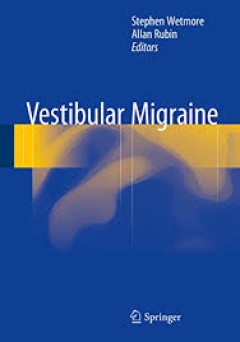
Vestibular Migraine
Vestibular Migraine is a concise monograph that presents the scientific basis for the diagnosis and treatment of this common yet largely unrecognized cause of dizziness. Current knowledge of the features of the condition is described, and clear guidance is provided on the differentiation of vestibular migraine from other conditions that induce dizziness, including Ménière’s disease. Symptom…
- Edition
- -
- ISBN/ISSN
- 978-3-319-14550-1
- Collation
- -
- Series Title
- -
- Call Number
- -
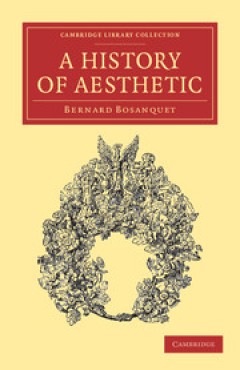
A History of Aesthetic
After more than ten years teaching ancient Greek history and philosophy at University College, Oxford, the British philosopher and political theorist Bernard Bosanquet (1848–1923) resigned from his post to spend more time writing. He was particularly interested in contemporary social theory, but he was also concerned with philosophical questions about art and aesthetics. In this area, Bosanqu…
- Edition
- -
- ISBN/ISSN
- 9781139136488
- Collation
- -
- Series Title
- Cambridge Library Collection - Philosophy
- Call Number
- -
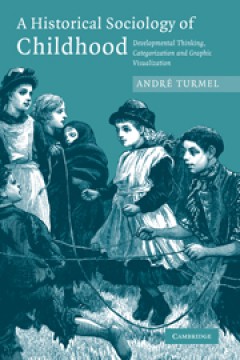
A Historical Sociology of Childhood
What constitutes a 'normal' child? Throughout the nineteenth century public health and paediatrics played a leading role in the image and conception of children. By the twentieth century psychology had moved to the forefront, transforming our thinking and understanding. André Turmel investigates these transformations both from the perspective of the scientific observation of children (public h…
- Edition
- -
- ISBN/ISSN
- 9780511489099
- Collation
- -
- Series Title
- -
- Call Number
- -
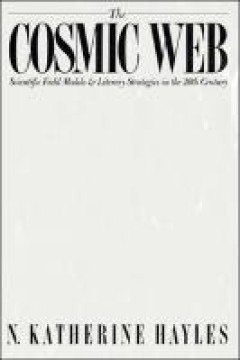
The Cosmic Web: Scientific Field Models and Literary Strategies in the Twenti…
From the central concept of the field—which depicts the world as a mutually interactive whole, with each part connected to every other part by an underlying field— have come models as diverse as quantum mathematics and Saussure’s theory of language. In The Cosmic Web, N. Katherine Hayles seeks to establish the scope of the field concept and to assess its importance for contemporary though…
- Edition
- Ed. 1
- ISBN/ISSN
- 9781501722974, 9781501727931
- Collation
- 210
- Series Title
- -
- Call Number
- 530.143 HAY c
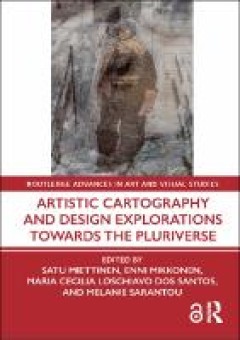
Artistic Cartography and Design Explorations Towards the Pluriverse
This edited volume uses an interdisciplinary approach to art and design that not only reframes but also repositions agendas and actions to address fragmented global systems. Contributors explore the pluriverse of art and design through epistemological and methodological considerations. What kinds of sustainable ways are there for knowledge transfer, supporting plural agendas, finding novel ways…
- Edition
- Ed. 1
- ISBN/ISSN
- 9781000815900, 9781032245164
- Collation
- 283
- Series Title
- Routledge Advances in Art and Visual Studies,
- Call Number
- 729.074 ART a

Electric Worlds / Mondes électriques: Creations, Circulations, Tensions, Tra…
What interpretation(s) do today’s historians make of electrification? Electrification is a process which began almost a hundred and fifty years ago but which more than one billion men and women still do not have access to. This book displays the social diversity of the electric worlds and of the approaches to their history. It updates the historical knowledge and shows the renewal of the hist…
- Edition
- Ed. 1
- ISBN/ISSN
- 9782807600294;9782875743305
- Collation
- 606
- Series Title
- Histoire de l’énergie/History of Energy, 8
- Call Number
- 909.0223 ELE e

Corporate Entrepreneurship
Das Lehrbuch bietet einen umfassenden Einblick in die unternehmerische Gestaltung des Management in etablierten Unternehmen. Gekennzeichnet durch die Dimensionen Innovativität, Proaktivität und Risikobereitschaft ist Corporate Entrepreneurship heute belegbar ein wichtiger Faktor für nachhaltigen Unternehmenserfolg. Die Autoren beleuchten das Konzept wissenschaftlich und präsentieren die Erk…
- Edition
- 1
- ISBN/ISSN
- 978-3-658-00646-4
- Collation
- Business and management
- Series Title
- -
- Call Number
- 650.1

Kapitalbeteiligungsgesellschaften und ihre Portfoliounternehmen
Die Finanzierung mit Venture Capital oder Private Equity gewinnt in Deutschland zunehmend an Bedeutung. Ein Spezifikum einer solchen Finanzierung ist es, dass für den begrenzten Beteiligungszeitraum nicht nur Kapital bereitgestellt wird, sondern der Kapitalgeber auch eine mehr oder minder intensive Zusammenarbeit mit dem Management des finanzierten Unternehmens anstrebt. Frank Pankotsch unt…
- Edition
- 1
- ISBN/ISSN
- 978-3-322-82127-0
- Collation
- Manajemen
- Series Title
- -
- Call Number
- 658.8

Enterprise Risk Management in International Construction Operations
This book provides readers an understanding of the implementation of Enterprise Risk Management (ERM) for international construction operations. In an extended case study, it primarily focuses on Chinese construction firms (CCFs) based in Singapore. In this regard, the book explains the differences and similarities between Risk Management (RM), Project Risk Management (PRM) and ERM in the const…
- Edition
- 1
- ISBN/ISSN
- 978-981-287-549-5
- Collation
- Business Management
- Series Title
- -
- Call Number
- 650
 Computer Science, Information & General Works
Computer Science, Information & General Works  Philosophy & Psychology
Philosophy & Psychology  Religion
Religion  Social Sciences
Social Sciences  Language
Language  Pure Science
Pure Science  Applied Sciences
Applied Sciences  Art & Recreation
Art & Recreation  Literature
Literature  History & Geography
History & Geography